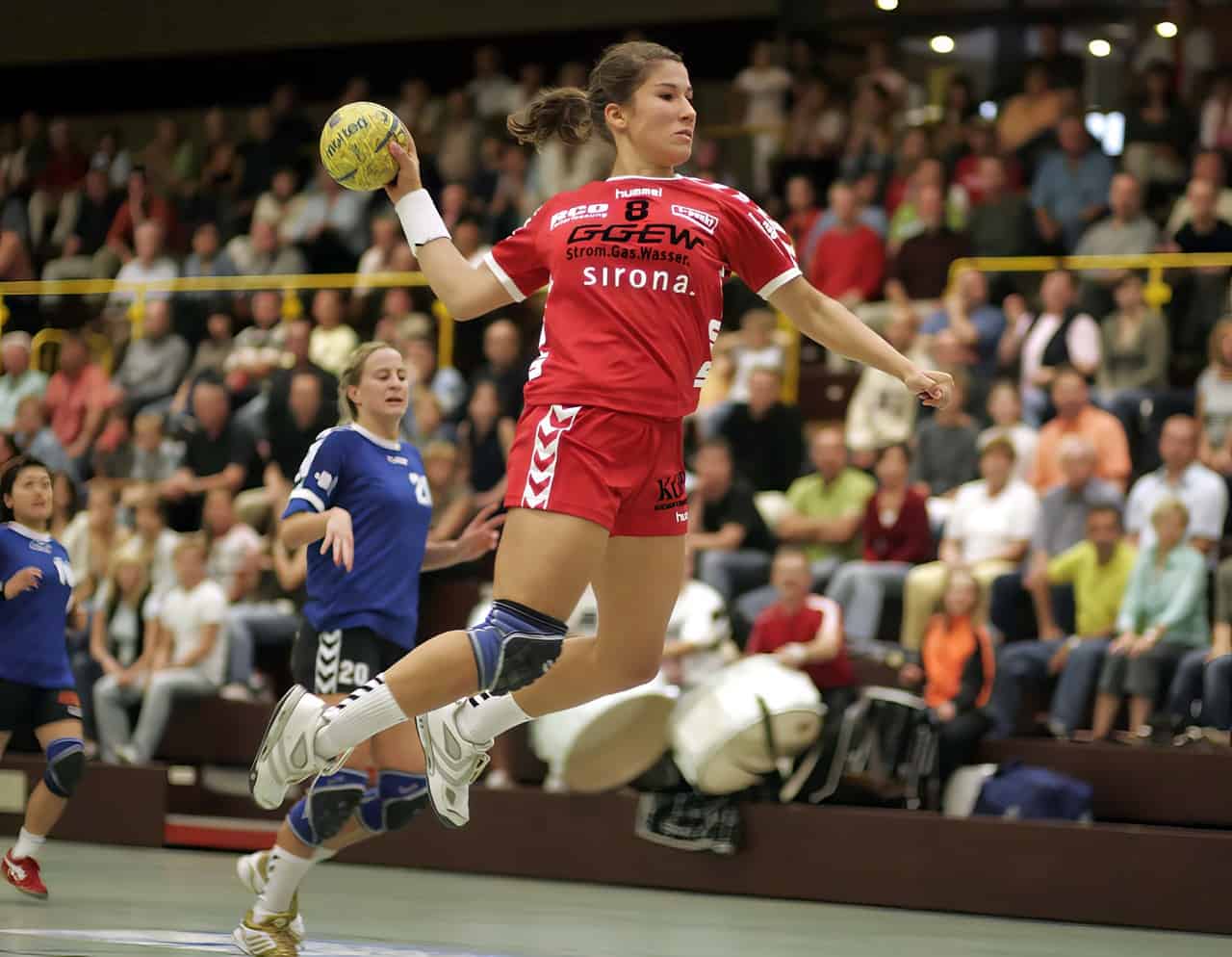Have you ever found yourself itching to expand your sports horizons, moving beyond the usual suspects of baseball, basketball, and soccer? Trust me; I understand that curiosity. That’s why I ventured into the dynamic world of handball—a sport brimming with energy that’s winning fans all over our planet.
This article isn’t just a read; it’s your front-row ticket to mastering the fast-paced excitement of handball. You’ll get the lowdown on its basic rules and witness its Olympic-level thrills.
The sport is growing so quickly that handball betting and fantasy leagues are becoming more popular ways for fans to engage. But there’s still nothing quite like watching a live match unfold.
Prepare to get hooked as we unpack what makes handball an absolute blast!
Key Takeaways
Handball is a team sport that’s like a mix of basketball, soccer, and hockey. Players score by throwing the ball into the other team’s net.
Each handball game has two 30-minute halves. Teams have 7 players each, including one goalie who can use their feet in the goal area.
Major handball competitions include the Olympics, World Championships, and European Champions League. They showcase top talent from around the world.
The sport has evolved over time and is especially popular in Europe but is also growing in places like North Africa and Asia.
Table of Contents
The Essence of Handball: An Overview
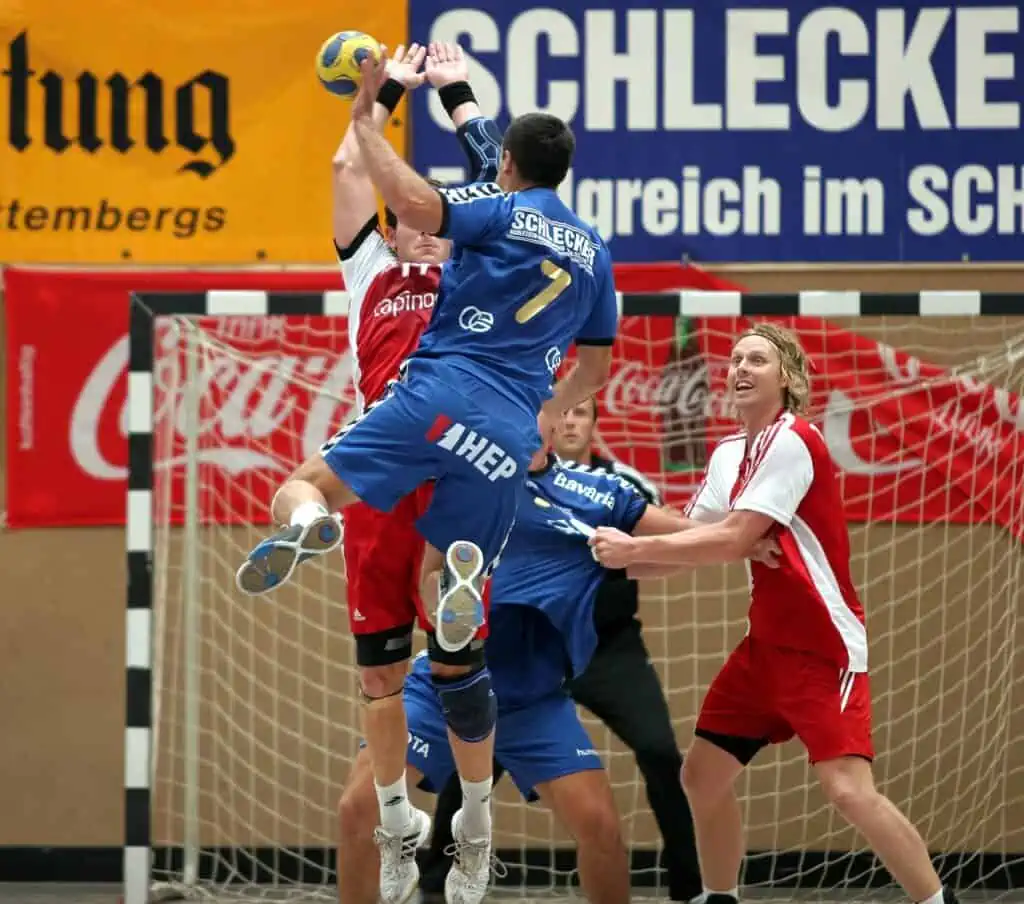
At its core, handball melds agility, strategy, and teamwork into a dynamic sport where the fundamental goal is to outmaneuver opponents and score by hurling a ball into their net.
Definition and Basic Objectives
Handball is like a mix of basketball, soccer, and hockey. My job on the court is simple: work with my team to score by throwing the ball into the opponent’s net and do everything we can to keep them from scoring in ours.
We run around on a big rectangle, passing or dribbling the ball and shooting from outside this line that forms a half-circle around the goal area.
The main point of handball is having fun while being active. It gets pretty intense, too; you must be quick, smart about your moves, and ready to play hard defense. With no pads or helmets—just pure sport—it’s all about skill and teamwork for us out there.
And after 60 minutes split into two halves, it’s great seeing which team worked together best to claim victory!
The Birth and Evolution of Handball
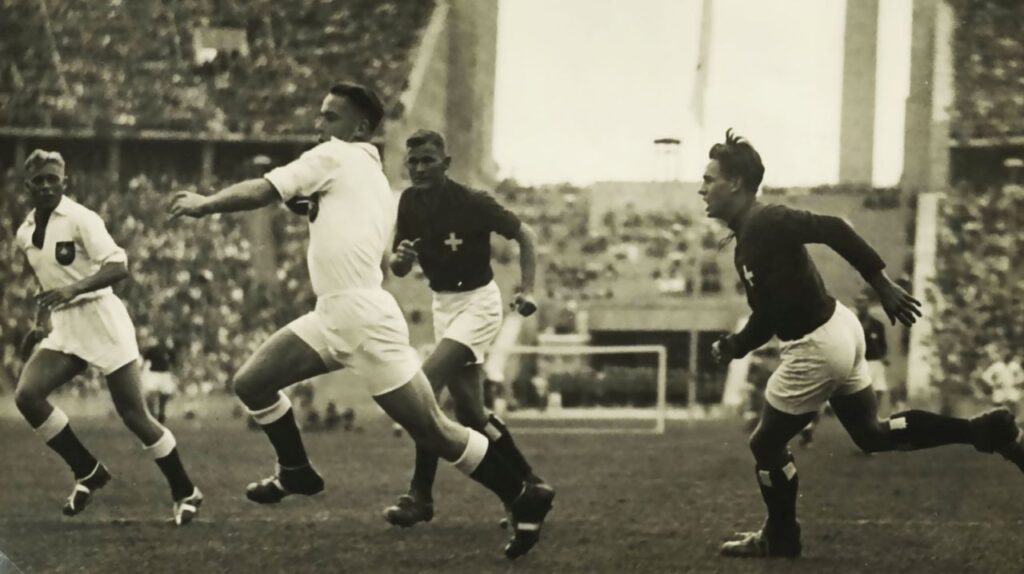
Handball’s origins trace back to ancient times, but its modern form truly took shape in the late 19th century, flourishing particularly in Europe. As an Olympic sport since 1972 for men and 1976 for women, it has evolved into a fast-paced game that continuously adapts to amplify excitement and skill.
Dive deeper to witness handball’s transformation from historic pastime to today’s dynamic global sensation.
Historical Background
Handball didn’t just pop up out of nowhere. Back in Europe during the 1920s, people took games they were already playing and mixed them up to create what we know as handball today.
It was like taking bits and pieces from different puzzles to make a whole new picture. Before all this happened, there was a game called field handball, which was kind of a big deal at the beginning of the 1900s.
This version had more players on each team, and they played it outside.
Over time, handball moved indoors and slimmed down to seven players per side. That’s when things got really interesting with fast moves and high-energy plays that made it super exciting to watch and play, not unlike the rising sport of Bulletball.
Just imagine running around with your friends, throwing a ball into a goal post – sounds fun, right? And guess what? By slimming down teams and bringing it inside, handball became such an awesome sport that by 1936, it stepped onto the Olympic stage for men’s teams – with women’s handball joining later in 1976!
Handball’s Olympic Journey
I love watching Olympic handball, and it’s been part of the Games for a long time. Back in 1936, they played field handball for the first and only time at the Olympics in Berlin. It took a while, but indoor handball made its big debut at the Munich 1972 Olympics.
Now, flash forward to Paris 2024 – there’s going to be intense action with 12 men’s teams and 12 women’s teams all gunning for that shiny gold medal.
The Olympics really show off how exciting handball can get. Every four years, teams from around the world bring their A-game to one of the coolest sports stages out there. It makes me proud just to imagine stepping onto that court, representing my country, and being part of such an epic event with top athletes vying to be number one!
Mastering the Game: Rules and Regulations
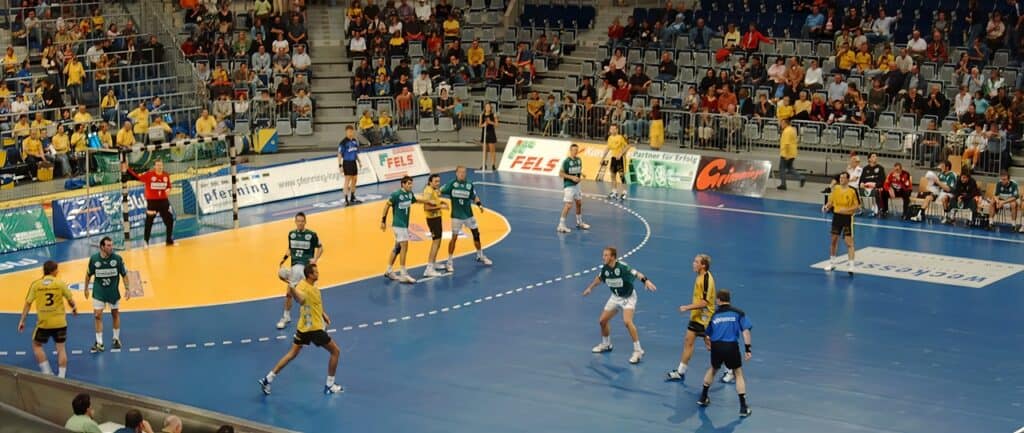
Understanding the rules and regulations of handball is key to mastering its gameplay; delve into the specifics from foul calls to time management and see how these guidelines will shape play in the upcoming 2023/24 season.
Keep reading to become well-versed in the fast-paced world of handball!
Basic Rules Explained
Handball is a fast-paced game that’s super fun to play. It mixes up soccer and basketball elements, but you use your hands!
- Two teams play against each other, and each team has 7 players on the court, including one goalkeeper.
- The point of the game is to score more goals than the other team. You throw the ball into their net to get a goal.
- Games are split into two halves, each lasting 30 minutes. That means there’s a total of an hour of playing time.
- You can’t step inside the goal area when you have the ball. This area is clearly marked on the court.
- Players must dribble or pass the ball; they can’t hold it for more than three seconds or take more than three steps without dribbling.
- Only goalkeepers can touch the ball with their feet and only within their own goal area.
- A foul happens when a player hits, blocks, holds, or trips another player on purpose. When this happens, the other team gets a free throw or sometimes a penalty kick if it’s really bad.
- Yellow cards are warnings for breaking rules or unsportsmanlike conduct. If someone gets two yellow cards or does something really bad, they get hit with a red card and have to leave the game.
- Free throws are given for smaller fouls outside of serious ones that lead to penalties. Players take these from where the foul happened unless it was inside their opponent’s goal area.
Duration of a Match
A team handball match is split into two halves, each lasting 30 minutes. There’s a break in the middle for players to catch their breath and plan their next moves. It’s fast-paced action that keeps you on the edge of your seat—especially if you’re watching a tight game where every move counts.
Just like ice hockey or basketball, knowing there’s only so much time makes every play more exciting.
Time flies during these games, man. Coaches can call timeouts to strategize with their players – think about it as calling your buddies over to figure out your next step on game night.
The clock stops during injuries, too, so everyone gets a fair shot at playing the full match without losing precious minutes when accidents happen.
Handball in the 2023/24 Season
This year’s handball season is shaping up to be thrilling. With Denmark bagging their third straight world title, all eyes are on them. Their star player, Mathias Gidsel, showed the world how it’s done by becoming the tournament MVP.
And with teams now set for Paris 2024, every match counts. There will be 12 men’s and 12 women’s teams fighting hard on the court.
Handball players have been training harder than ever to make those squads. France’s women are heading into this season as Olympic champs, and they’re not giving up that title easily.
The game keeps getting faster and more intense as players get better at dodging defenders and making those free throws count. Watching a handball game means seeing non-stop action where anything can happen before the final buzzer rings.
The Thrill of Handball Betting
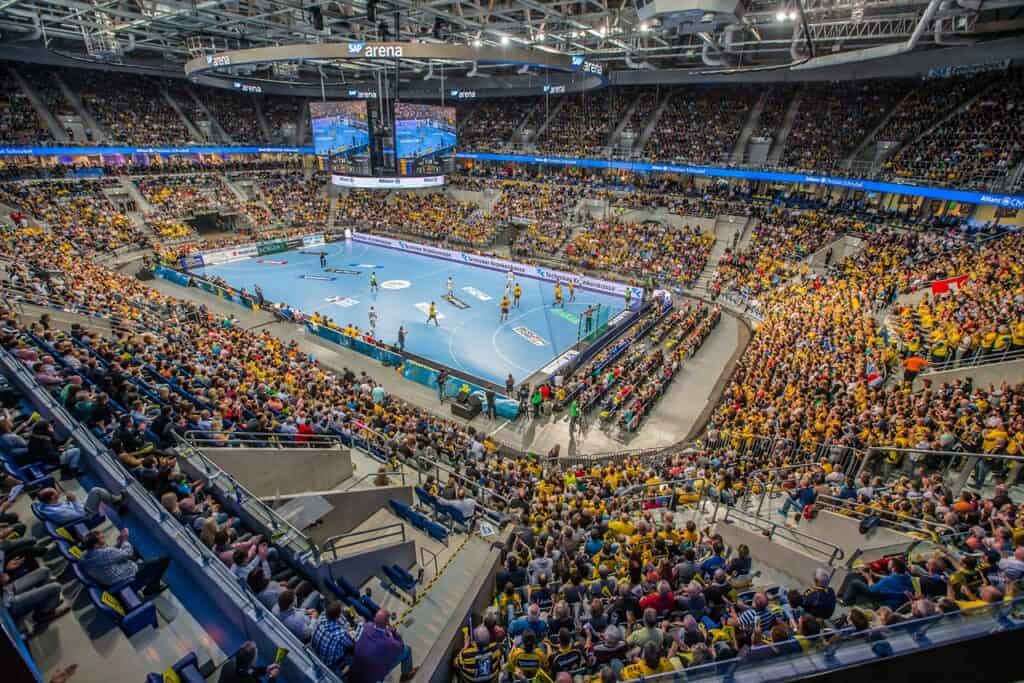
Handball betting is a big deal, especially over in Europe, where folks are really into the game. Take the EHF Champions League, for example. It’s like the all-star bash of European handball clubs, and it gets lots of people excited to put down bets.
I can bet on who’ll win, how many goals will be scored, and even which players will shine during the match.
Games last 60 minutes, so there are loads of chances to win some cash if you play your cards right. You’ve got to think fast, though – handball moves quick! The International Handball Federation watches over everything, making sure all bets are fair game.
Knowing that there’s a lot of history behind handball since the 1920s helps me make better guesses on who’s going to come out on top, too.
Handball Around the Globe
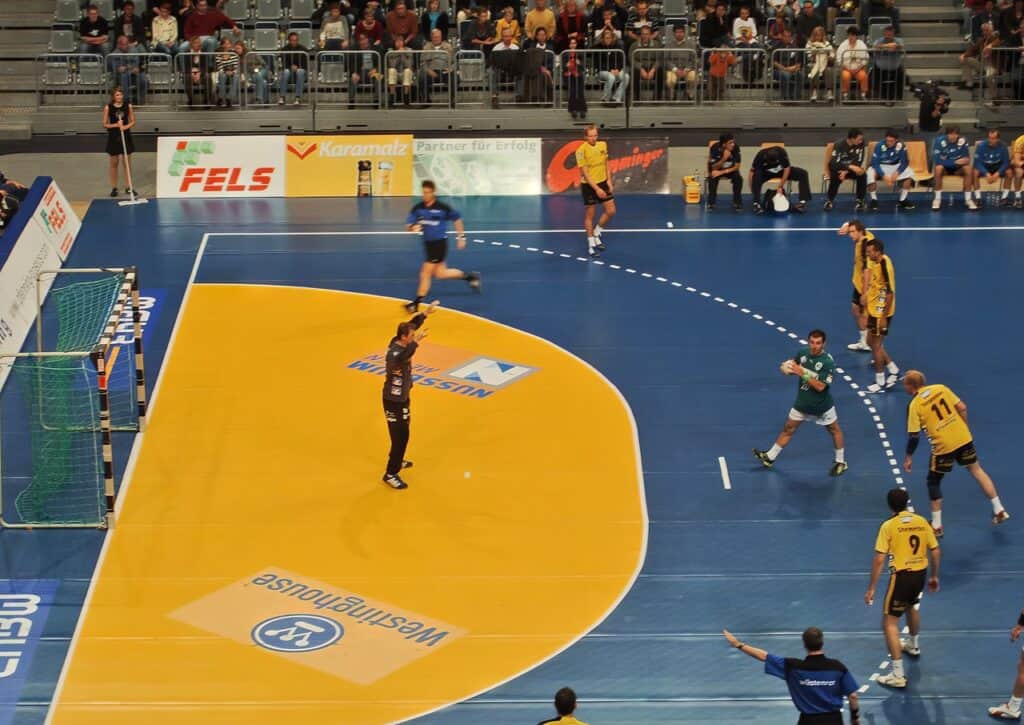
Handball’s appeal stretches far and wide, captivating fans across Europe, Asia, and Africa with its blend of speed, strategy, and physicality. In these regions, handball teams battle fiercely in leagues that are integral to local sports cultures.
Prestigious tournaments like the European Handball Championship and the IHF World Handball Championship showcase top-tier athletes from different nations clashing for glory. These competitions not only highlight the game’s international following but also amplify its significance as a unifying sporting event that transcends borders.
Popularity and Key Regions
Handball has fans all over the world, but it’s really big in Europe. Think of places like Scandinavia and the Balkans; that’s where you’ll find lots of people who love watching and playing handball.
Denmark, France, and Norway are top dogs right now—they keep winning a lot. They’ve got strong handball teams that know how to play the ball with skill.
In recent years, the game is also heating up in North Africa and the Middle East. Countries like Egypt and Qatar have been stepping up their game big time. They’re getting into late rounds in major men’s competitions and showing they can go toe-to-toe with some of those classic European powerhouses.
It’s cool to see new regions get pumped about handball – just shows how this sport keeps growing beyond its usual spots!
Noteworthy Handball Competitions
Handball is more than just a great hobby for men in their 20s; it’s also full of exciting competitions. From Olympic matches to world championships, there are big tournaments that bring out the best in the sport. Here’s what you need to know about these thrilling events where all court players show their skills.
Handball Basics Recap
All right, let me wrap this up. Think of handball as a super-fast game where you get to throw a ball into a goal. It’s like playing soccer with your hands instead of your feet! You’ve got to be quick and smart, moving the ball by passing or dribbling without taking too many steps.
And remember, only the goalie can hang out in the big arc by the goal. Playing handball is fun and intense – it’s all about speed, skill, and scoring points with your team!
FAQs About Handball
What is handball?
Handball is a fast-paced game where two teams try to score by throwing the ball into the other team’s goalposts. It’s played on a court with seven players on each side.
How do you play handball?
Players pass, catch, and shoot the ball with their hands while trying to get past the defense and score goals. The game has a center backcourt that helps direct play, and there are right wingmen who help attack.
Can players touch the ball with their feet?
Touching or playing the ball with your feet is not allowed in handball. If this happens, referees might call for free kicks against them.
What happens if you break a rule in handball?
If someone breaks a rule like double-dribbling or going out of bounds, they can be given penalties such as free throws for the other team or even been given red cards, which means ejection from the game.
Is there something called sandball?
Yes! Sandball is just like handball, but it’s played on sand instead of regular courts, which makes it quite fun and different!
Are there different positions in handhandbal
Yes! Just like basketball has point guards or association football has goalkeepers. In Handbal, every player has a special job, like being good at goalkeeping or acting as a playmaker who sets up plays.
